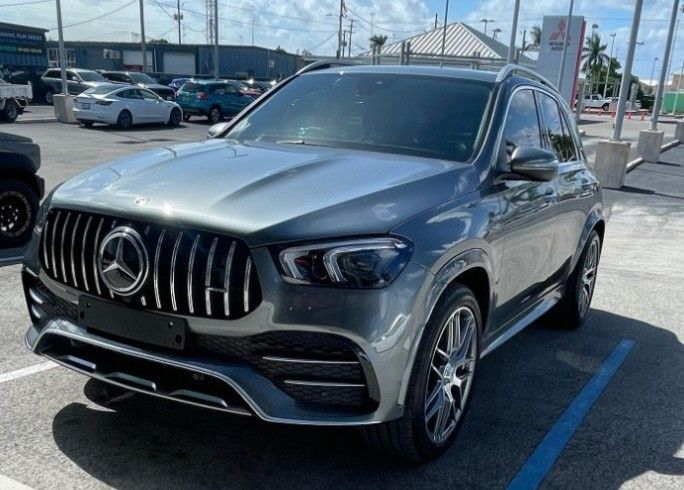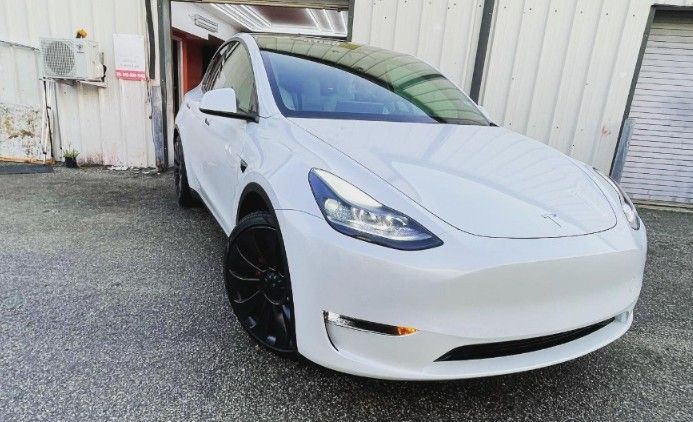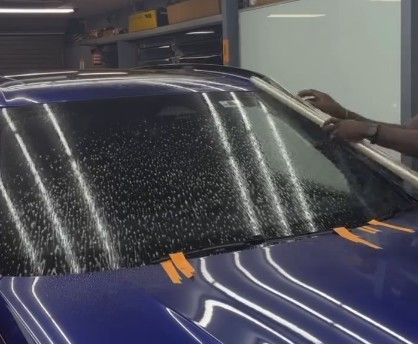Living in the Cayman Islands offers a lifestyle like no other sunny beaches, tropical weather, and scenic drives along the coastline. However, island living also presents a few challenges, particularly when it comes to maintaining the condition of your vehicle. Cars in coastal regions like the Cayman Islands are exposed to unique elements that can cause significant wear and tear on their paint and overall appearance.
The combination of saltwater, high humidity, intense UV rays, and frequent rain showers creates a harsh environment for your car’s exterior. Over time, these elements can lead to paint oxidation, corrosion, water spots, and a dull finish. To keep your vehicle looking pristine and protected, it’s essential to invest in reliable protection.

Why Protection is Essential for Your Car in Coastal Environments
In the Cayman Islands, the air is often laden with salt from the surrounding sea, which can accelerate the corrosion of a vehicle’s paintwork and metal components. Additionally, the high levels of UV radiation can fade your car’s paint, making it appear aged. Traditional car care products like wax are often unable to provide long-term protection against these harsh conditions.
Ceramic coatings have gained popularity as a modern solution for car protection, offering superior durability and long-lasting results. In this blog, we will compare ceramic coatings with traditional wax to help you determine which is best for your car in the Cayman Islands’ unique coastal environment.
Overview of Car Protection Options: Ceramic Coating vs. Traditional Wax
Both ceramic coatings and traditional wax provide a protective layer for your vehicle, but they differ significantly in terms of performance, longevity, and protection. Let’s dive deeper into each option to see how they stack up against one another.
What is Ceramic Coating? A Modern Solution for Superior Car Protection
Ceramic coatings are liquid polymers that chemically bond with a vehicle’s surface, forming a durable, long-lasting layer of protection. These coatings are typically made from silicon dioxide (SiO2) or similar compounds, which create a hard, hydrophobic surface that repels water, dirt, and other contaminants. This bond is much stronger than traditional wax, making ceramic coatings a more advanced option for protecting your car. The chemical bonding process ensures that the coating adheres tightly to the vehicle’s paint, creating a protective shield that lasts for months or even years with proper maintenance. Unlike wax, which sits on top of the paint, ceramic coatings fuse with the surface, providing better protection against environmental elements.
When applied, ceramic coatings fill in the microscopic imperfections in your car’s paintwork, creating a smoother, more hydrophobic surface. The coating bonds at a molecular level, making it far more durable than traditional car wax, which can wear off after just a few washes.
This hydrophobic surface causes water, mud, and contaminants to bead up and roll off, preventing the buildup of grime and reducing the chances of water spots and stains. Additionally, the coating provides enhanced protection against bird droppings, tree sap, road salts, and UV rays, all of which can cause damage over time.
Advantages of Ceramic Coatings Over Traditional Methods
- Durability: Ceramic coatings last significantly longer than traditional wax, often providing up to two years or more of protection.
- Hydrophobic Properties: The water-repellent surface makes cleaning your vehicle much easier and helps protect against water spots and stains.
- Enhanced Scratch Resistance: The hard coating helps protect against minor scratches and swirl marks, keeping your car’s paint looking fresh.
- UV Protection: Ceramic coatings offer added protection against harmful UV rays, preventing paint from fading and oxidizing over time.
- Easy Maintenance: Once applied, ceramic coatings require less frequent upkeep compared to waxing, saving you time and effort in the long run.
What is Traditional Car Wax? A Tried-and-True Car Care Staple
Traditional car wax has been a go-to solution for vehicle protection for decades. Wax comes in several forms: paste, liquid, and spray. Each type has its own advantages and ease of application. Paste wax is typically thicker and provides a stronger layer of protection, while liquid wax is easier to apply and buff off. Spray wax is the easiest to use but provides the least long-lasting protection. While wax can offer some degree of protection, its performance is limited in comparison to more modern solutions like ceramic coatings.
How Traditional Wax Works to Protect Your Car’s Paint
Car wax works by creating a protective layer over your vehicle’s paint. It fills in small imperfections, creating a glossy finish while providing a barrier against dirt, water, and other contaminants. However, wax doesn’t chemically bond with the paint surface. Instead, it simply sits on top, which means it wears off more quickly, especially in harsh environments like the Cayman Islands.
Traditional wax offers limited water resistance, which helps prevent water spots but doesn’t provide the same long-term protection against elements like salt, UV rays, and bird droppings. Frequent washing and reapplication are necessary to maintain its effectiveness.
The Pros and Cons of Using Wax for Car Protection
Pros:
- Affordable: Wax is generally less expensive than ceramic coatings, making it an attractive option for budget-conscious car owners.
- Glossy Finish: Wax gives a deep, shiny finish that many car enthusiasts love.
- Easy to Apply: Applying wax is a simple process that most people can do themselves.
Cons:
- Short Lifespan: Wax needs to be reapplied frequently, especially in the Cayman Islands’ coastal climate.
- Limited Protection: Wax provides less protection against harsh environmental factors like salt, UV rays, and road debris.
- Frequent Maintenance: To maintain the protective layer, regular waxing is required, which can be time-consuming.
Comparing the Durability: Ceramic Coating vs. Wax in Island Conditions
When it comes to protecting your vehicle from the harsh coastal environment of the Cayman Islands, durability is a key consideration. Ceramic coatings offer extended protection compared to traditional wax, making them an ideal choice for island cars. Let's compare the longevity and performance of each.

1. Longevity of Ceramic Coatings vs. Wax (Maintenance Schedules and Lifespan)
Ceramic coatings typically last anywhere from one to two years, with proper care and maintenance. In contrast, wax requires reapplication every few months to maintain protection. Wax’s short lifespan can be costly and time-consuming in coastal climates where frequent reapplication is necessary.
2. How Cayman Island Weather Impacts Vehicle Protection
The humid and salty air of the Cayman Islands accelerates the degradation of vehicle surfaces. While both ceramic coatings and wax provide protection, the intense UV rays, frequent rain, and saltwater can quickly break down wax layers. Ceramic coatings, on the other hand, offer more durable protection, even in these extreme conditions.
3. The Role of UV Rays, Saltwater, and Humidity in Vehicle Degradation
UV rays cause paint to fade over time, while saltwater from the ocean leads to corrosion and rust, especially in coastal areas. Humidity amplifies these effects. Ceramic coatings provide a strong, lasting shield against these elements, while wax loses its effectiveness much faster, especially under intense exposure.
The Protective Benefits of Ceramic Coating in Coastal Climates
Ceramic coatings are an excellent choice for vehicles exposed to the harsh conditions of coastal climates. They offer unmatched protection against a range of environmental challenges that are common in the Cayman Islands. Here's how ceramic coatings keep your car safe and looking brand new.
1. Protection Against Saltwater, Rust, and Corrosion
Saltwater is one of the most corrosive elements for vehicles in coastal regions. Ceramic coatings provide an added layer of protection against salt, preventing corrosion and rust from eating away at your car’s metal components. This protective barrier ensures your vehicle remains rust-free, even with frequent exposure to saltwater.
2. Enhanced Resistance to Water Spots, Bird Droppings, and Tree Sap
In humid, coastal climates, bird droppings, tree sap, and water spots can be major culprits in damaging your car’s paint. Ceramic coatings create a protective shield that makes it easier to wipe away contaminants before they cause permanent damage, preventing stains and marks on your vehicle's surface.
3. How Ceramic Coatings Create a Hydrophobic Surface for Easy Cleaning
Ceramic coatings form a hydrophobic surface, meaning that water and contaminants cannot easily stick to your car’s paint. This means rainwater beads up and rolls off, leaving less residue behind. This makes regular cleaning faster and more efficient, reducing the buildup of grime and keeping your vehicle cleaner for longer.
The Pros and Cons of Traditional Wax for Cars Exposed to Coastal Conditions
While traditional wax can provide a glossy finish, it doesn't offer the same level of protection as ceramic coatings, especially in the Cayman Islands' harsh climate. Here's an overview of the benefits and limitations of using wax for vehicles exposed to coastal conditions.
1. Limited Protection Against the Elements (Water Spots, Salt)
Wax creates a protective layer, but its ability to protect against the harsh elements of the Cayman Islands, such as saltwater, UV rays, and rain, is limited. While it can prevent water spots to an extent, wax doesn’t offer long-term protection against salt buildup, rust, or oxidation.
2. Regular Maintenance Required: How Often Should You Reapply Wax?
One of the biggest drawbacks of using wax is its frequent need for reapplication. In coastal regions like the Cayman Islands, waxing every few months is necessary to maintain protection. This can be time-consuming and costly, as regular waxing services are required to keep your car’s exterior shielded from environmental elements.
3. Wax vs. Ceramic Coating: Which is Better for Cars in the Cayman Islands?
While wax can give your vehicle a beautiful shine, it is simply not as durable or effective as ceramic coatings in the long run. Wax needs constant maintenance and is vulnerable to breakdown from saltwater, humidity, and UV rays. Ceramic coatings, however, offer superior protection, lasting far longer with minimal upkeep.
Cost Comparison: Ceramic Coating vs. Wax for Cayman Island Car Owners
When deciding between ceramic coatings and traditional waxing, cost is an important factor. While ceramic coatings come with a higher initial cost, their long-term value and protection may justify the investment. Here's a comparison of the costs associated with each option.
1. Initial Costs of Ceramic Coating vs. Traditional Waxing Services
Ceramic coating services typically have a higher upfront cost, with professional application ranging from several hundred to a thousand dollars. Waxing, on the other hand, is more affordable, with costs typically ranging from $50 to $150 per application. However, this initial cost difference should be weighed against the longevity of each solution.
2. Long-Term Value and Cost-Effectiveness of Ceramic Coatings
Though ceramic coatings have a higher initial cost, they provide long-term value by requiring less frequent maintenance. With ceramic coatings lasting one to two years, you won't need to invest in waxing services every few months. This long-term durability makes ceramic coatings a cost-effective solution over time.
How to Balance Upfront Costs with Future Protection and Maintenance Needs
When choosing between ceramic coatings and traditional waxing for your vehicle, understanding the long-term financial impact is crucial. While the upfront costs of waxing are generally lower than ceramic coatings, the ongoing maintenance and reapplication required for wax can add up significantly over time. On the other hand, while ceramic coatings require a larger initial investment, they provide superior, long-lasting protection, reducing the need for frequent maintenance. Here's how you can balance the costs effectively:

1. Initial Investment vs. Long-Term Savings
- Waxing: Traditional waxing services typically cost between $50 and $150 per application, depending on the type of wax and the size of your vehicle. However, wax doesn’t last long, and in coastal climates like the Cayman Islands, it needs to be reapplied every 2–3 months. This frequent upkeep can accumulate quickly, especially when factoring in the costs of professional waxing or your time spent doing it yourself.
- Ceramic Coatings: Ceramic coatings generally have a higher upfront cost, ranging from $300 to $1,000 for professional application, depending on the quality and brand of the product. While this may seem expensive at first glance, the protection it provides can last anywhere from one to two years, with minimal maintenance required during that period.
2. Long-Term Protection and Reduced Maintenance
- Less Frequent Upkeep: Unlike wax, which wears off quickly due to exposure to the elements, ceramic coatings bond with the paint surface and form a durable, hydrophobic layer. This layer prevents dirt, water, salt, and contaminants from adhering to your vehicle’s surface, keeping your car cleaner for longer and reducing the need for frequent washing or waxing.
- Durability: A ceramic coating’s longevity means you won't need to reapply it every few months, which translates into less time and effort spent on car maintenance. Over the course of a couple of years, the cost savings from reduced waxing will outweigh the initial higher investment in ceramic coating.
- Protection Against Harsh Conditions: In coastal areas like the Cayman Islands, where saltwater and humidity play a significant role in vehicle degradation, ceramic coatings offer more robust protection against corrosion, rust, and paint fading. Traditional wax doesn’t provide the same level of defense against these elements, which can result in more frequent repairs and replacements of the vehicle's exterior.
3. Time-Saving Benefits
- Reduced Maintenance Time: With ceramic coatings, your vehicle will require less time and attention. Unlike waxing, which demands periodic reapplication, ceramic coatings can be maintained with minimal effort. Regular washing is often enough to keep the car looking fresh. This saves you time spent on reapplying wax or visiting a professional for frequent waxing services.
- Ease of Cleaning: Ceramic coatings create a hydrophobic surface that repels water, dirt, and contaminants. This means that washing your car becomes faster and easier since dirt and grime are less likely to stick to the surface. You can spend less time cleaning and more time enjoying your vehicle.
4. Long-Term Value of Ceramic Coatings
- Enhanced Resale Value: Cars that have been treated with ceramic coatings tend to maintain their aesthetic appeal better than those that rely on waxing. The protective layer keeps the paint in pristine condition, preventing fading, swirl marks, and other surface imperfections. This can increase your car's resale value when the time comes to sell.
- Improved Performance: Beyond aesthetic value, ceramic coatings improve your car’s performance by protecting its exterior and maintaining its overall condition. This could mean fewer repairs over the long term and a vehicle that performs better when exposed to the demanding environment of the Cayman Islands.
5. Cost Breakdown for Better Comparison
- Waxing:
- Lower initial cost
- Requires reapplication every 2-3 months
- Frequent maintenance, especially in coastal environments
- Shorter lifespan and less durable protection
- Can accumulate to $200–$600 annually
- Ceramic Coating:
- Higher upfront cost ($300–$1,000)
- Long-lasting protection (1–2 years)
- Minimal maintenance and reapplication
- Saves time and money in the long run
- Reduced need for frequent washes and waxing
- Increased resale value and better overall performance
Note: All mentioned Prices are estimated.
Key Factors to Consider When Choosing Between Ceramic Coating and Wax
Choosing the right car protection method, whether ceramic coating or traditional wax, depends on several factors that relate to both your vehicle and your lifestyle. It's important to weigh the advantages and disadvantages of each option based on how you use your car, the environmental conditions it’s exposed to, and your preferences for maintenance. Let’s break down the key factors you should consider when making your decision:
1. Climate and Environmental Exposure
- Coastal Conditions: If you live in coastal areas like the Cayman Islands, where saltwater, high humidity, and UV rays are constant threats, ceramic coatings are the superior option. Ceramic coatings offer stronger protection against saltwater corrosion, UV fading, and oxidation, all of which are common in coastal climates. Wax, while it offers some protection, won’t hold up as well against the elements, requiring more frequent reapplications.
- UV Protection: The intense sun in tropical areas can cause traditional wax to fade quickly, whereas ceramic coatings are specifically designed to offer UV protection, helping prevent paint from oxidizing and maintaining a glossy finish over time.
- Rain and Humidity: If your car is regularly exposed to rain or high humidity, ceramic coatings will provide a more robust solution. The hydrophobic properties of ceramic coatings repel water, dirt, and contaminants, making your vehicle easier to clean. Wax, in contrast, doesn’t offer the same level of water repellency and tends to break down more rapidly when exposed to rain and humidity.
2. Maintenance Time and Effort
- Ease of Maintenance: If you prefer low-maintenance car care, ceramic coatings are the better choice. While waxing is an easy DIY project, it needs to be reapplied regularly (every 2–3 months) to maintain effectiveness. Ceramic coatings, on the other hand, can last from one to two years with minimal maintenance, saving you both time and effort.
- Washing Frequency: With ceramic coatings, dirt and water bead off your car’s surface, making washing quicker and easier. Wax requires more frequent washing, and despite its initial protective layer, you may still experience water spots or contaminants that stick to your vehicle’s surface. If you don’t mind regular upkeep and are looking for a glossy finish, wax might work. However, if you want to spend less time cleaning, a ceramic coating is a more time-efficient solution.
3. Vehicle Usage and Exposure to Damage
- Vehicle Exposure to Harsh Elements: If your vehicle is regularly exposed to harsh conditions like road salts, bird droppings, tree sap, or frequent rain, ceramic coatings offer superior protection. Wax will provide some defense but won't shield your car from contaminants as effectively, and it may need more frequent reapplication to combat these challenges.
- Scratch Resistance: Ceramic coatings are more resistant to minor scratches and swirl marks compared to wax. If your car is prone to scratches or gets a lot of wear from driving on gravel roads, ceramic coatings offer a harder, more durable layer of protection. Wax can be scratched or worn away more easily, leaving your vehicle vulnerable to paint damage.
4. Cost and Budget Considerations
- Upfront Costs: Ceramic coatings are more expensive initially compared to traditional wax. Professional ceramic coating applications can range from $300 to $1,000, depending on the type of coating and your vehicle's size. Waxing, on the other hand, typically costs between $50 and $150 per application. If you're looking for a low-cost, temporary solution, wax might be more suitable. However, consider that waxing is a recurring expense, while ceramic coatings offer long-term protection.
- Long-Term Savings: While ceramic coatings require a higher initial investment, they are more cost-effective in the long run. With less frequent reapplication needed, you’ll save money on waxing services and avoid additional maintenance costs. Waxing every few months can add up, especially when factoring in the time you spend on applying it or taking your car in for professional services.
5. Resale Value
- Maintaining a Pristine Finish: If you plan on selling your vehicle in the future, ceramic coatings can help maintain its appearance and increase its resale value. The protective layer helps prevent fading, oxidation, and other forms of wear, keeping your car’s paint looking like new for longer. Wax, while it gives a temporary shine, doesn’t provide the same long-term protection and may not help preserve the vehicle’s finish as effectively over time.
- Professional Appearance: Ceramic coatings can help maintain a sleek, glossy look that appeals to potential buyers, especially those who live in coastal areas like the Cayman Islands. Buyers may be more inclined to purchase a vehicle with ceramic coating, knowing that it has been well-maintained and protected from the elements.
6. Time Investment
- DIY vs. Professional Application: Both ceramic coatings and wax can be applied by yourself, but ceramic coatings often require a more detailed, time-consuming application process. Wax is quicker to apply and easier for a beginner, while ceramic coatings may require professional application or at least careful DIY preparation. If you're willing to invest time in applying a ceramic coating (or scheduling a professional service), it will pay off in the form of reduced maintenance time in the future.
The decision between ceramic coatings and traditional wax comes down to how much effort and time you’re willing to invest, the conditions your vehicle faces, and your long-term protection goals. If you prioritize minimal maintenance, long-lasting protection, and superior defense against the harsh elements of coastal climates, ceramic coatings are the clear winner. However, if you're working within a tighter budget or prefer more frequent DIY maintenance, waxing can still provide a glossy finish, though with more upkeep required. When in doubt, consult with local experts like Cayman Window Tinting to ensure you're making the right choice for your car’s protection needs in the Cayman Islands.

Why Choose Cayman Window Tinting for Your Ceramic Coating Needs?
When it comes to professional ceramic coating services in the Cayman Islands, Cayman Window Tinting is your trusted local expert. Our team is deeply familiar with the unique challenges vehicles face in the coastal environment of the Cayman Islands. With the constant exposure to saltwater, UV rays, and high humidity, your car requires specialized protection that can stand up to these harsh conditions. That's where our high-quality ceramic coating applications come in. We use only the best products available to ensure that your vehicle receives long-lasting protection against the elements. Whether you're looking to preserve your car's shine, protect against corrosion, or maintain its value, ceramic coating is the ideal solution, and Cayman Window Tinting is here to deliver just that.
Our professional installation ensures a flawless finish, creating a hydrophobic surface that repels water, dirt, and contaminants, making your vehicle easier to maintain. Plus, with our expert application, you can rest assured that your car will be protected for months to come, reducing the need for frequent maintenance. Don't leave your car’s protection to chance. Cayman Window Tinting understands the local climate and knows how to keep your vehicle looking brand new, no matter the weather. Contact us today to schedule a consultation and take the first step in preserving your car’s appearance with ceramic coating.
Conclusion
In conclusion, when it comes to protecting your vehicle in the Cayman Islands, ceramic coatings are the superior choice over traditional wax. They offer better durability, superior protection against environmental elements, and long-term cost-effectiveness. While wax may be more affordable initially, it requires frequent reapplication and offers limited protection against the harsh coastal conditions. Ceramic coatings, on the other hand, provide lasting value, reduced maintenance, and superior defense against saltwater, UV rays, and other environmental challenges unique to island living.
For the best protection for your island car, consider investing in a professional ceramic coating from
Cayman Window Tinting. Our expert team understands the local climate and offers high-quality, long-lasting protection that will keep your vehicle looking brand new for years to come. Don't settle for short-term solutions, protect your car for the long haul. Contact us today to schedule your ceramic coating consultation!




